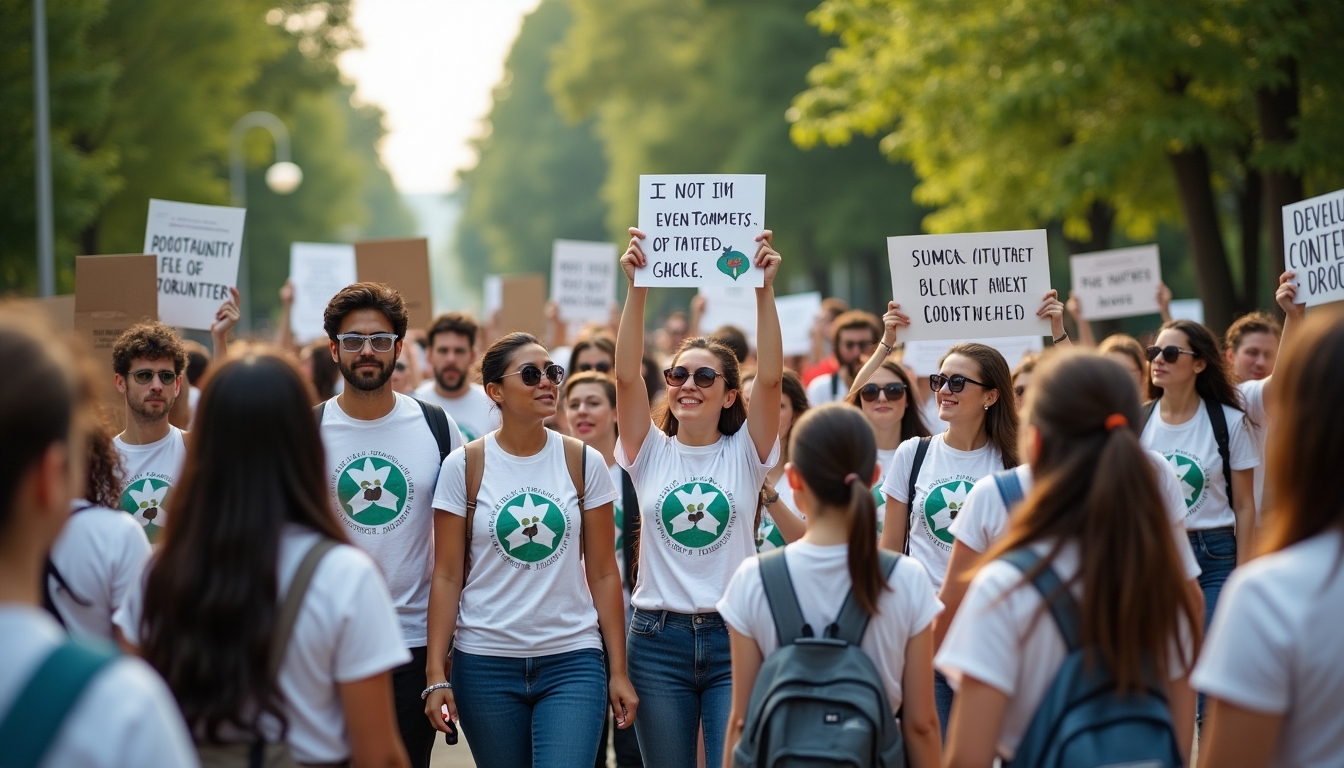Advocacy Programs for Volunteers: Making a Difference Through Action
By , March 20, 2025
Overview
Advocacy programs for volunteers empower people to support causes they believe in. These initiatives range from raising awareness to pushing for policy changes. This article dives into what these programs are, their impact, and how you can join the movement.

What Are Advocacy Programs for Volunteers?
Advocacy programs for volunteers are organized efforts where people give their time to promote a cause. These can be small local projects or big campaigns run by nonprofits. Volunteers might educate others, push for new laws, or help people directly affected by an issue.
What makes these programs special is how they turn passion into action. If you care about clean water, equal rights, or animal welfare, there’s a program out there for you. It’s about everyday people stepping up to make a difference.
Why Volunteer Advocacy Matters
Volunteer advocacy changes lives—both for the causes and the people involved. It’s not just about the big wins; it’s about the small steps forward too. Volunteers amplify voices that might otherwise go unheard, like those of underserved communities.
Take policy change, for instance. Volunteers have helped pass laws on everything from recycling to healthcare. On a personal level, I’ve seen friends grow more confident after speaking out at events. It’s a ripple effect—your effort inspires others.

Types of Advocacy Programs
Not all advocacy programs for volunteers look the same. Here’s a breakdown of the main types:
| Type | What It Involves | Example Causes |
|---|---|---|
| Grassroots | Local, community-led efforts | Clean parks, food drives |
| Nonprofit | Larger, organized campaigns | Education, poverty relief |
| Political | Focus on laws and government | Voting rights, gun laws |
| Corporate | Business-backed volunteer projects | Green energy, literacy |
Each type fits different interests. I once joined a grassroots effort to save a local library—knocking on doors felt personal and real.
How Advocacy Impacts Communities
The effects of volunteer advocacy go deep. It’s not just about fixing problems; it’s about building stronger communities. Volunteers connect people who care about the same things, creating a network of support.
For example, I knew someone who volunteered to advocate for affordable housing. She didn’t just help pass a new rule—she built friendships with neighbors who’d never met before. That’s the kind of change that lasts.

Getting Started as a Volunteer Advocate
Want to jump into advocacy? Here’s how to begin:
- Find Your Cause: What fires you up? Pick something you’d fight for.
- Look for Groups: Check sites like VolunteerMatch or local nonprofits.
- Know Your Strengths: Can you talk to people, write, or plan events?
- Take Small Steps: Start with a one-time event before committing more.
- Learn as You Go: Ask others for tips—they’ve been where you are.
You don’t need tons of time. Even a few hours can start something big.
Real Stories from the Field
I’ve seen advocacy in action, and it’s powerful. Take Lisa, a volunteer I met at a clean water rally. She started by handing out flyers, unsure if she’d make a difference. A year later, she was leading talks with city officials. Her work helped install new filters in schools.
Stories like hers show how ordinary people can spark change. It’s not always easy, but it’s worth it.

Challenges You Might Face
Advocacy isn’t all smooth sailing. Time is a big hurdle—balancing work, life, and volunteering can feel tough. Sometimes progress is slow, and that can wear you down. Resources can be tight too—many groups run on small budgets.
But the wins keep you going. Seeing a law change or a neighbor thank you makes it real. I’ve felt that exhaustion, but also the pride of pushing through.
The Rewards of Sticking With It
The payoffs are huge. You’ll see results—like cleaner streets or happier kids. You’ll grow too—skills like speaking up or organizing come naturally over time. Plus, you’ll meet people who get you.
I once helped a group advocate for bike lanes. It took months, but riding down that new path with friends I’d made? That felt like victory.

Tools and Trends in Advocacy
Today’s volunteers have more ways to shine. Social media lets you reach thousands with a single post. Digital tools like petitions or livestreams make advocacy louder and faster.
Young people are stepping up too, bringing fresh energy. I’ve seen teens lead climate marches that adults couldn’t ignore. The future’s bright with these new voices.
Tips for Long-Term Success
To keep going, pace yourself. Burnout’s real, so take breaks when you need them. Team up with others—shared work feels lighter. And celebrate the small stuff, like a good meeting or a new supporter.
I learned this the hard way after pushing too hard on a project. Rest and teamwork saved me—and the cause.

The Bigger Picture
Advocacy programs for volunteers tackle huge issues—poverty, climate, equality. They’re part of a global push for better. Every volunteer adds to that momentum, whether they’re in a small town or a big city.
It’s about believing one person can matter. And when you join others, that belief turns into action that shapes the world.
Conclusion
Advocacy programs for volunteers let you turn your care into change. They’re a chance to grow, connect, and leave a mark. Start small or dive in—either way, your voice can move mountains. The world needs more advocates. Will you be one?